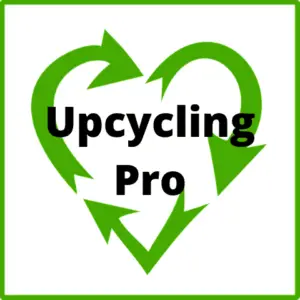In today’s environmentally conscious world, recycling and upcycling have become popular ways to reduce waste while also expressing creativity. If you have a talent for crafting and a passion for sustainability, turning recycling into a profitable craft business might be the perfect opportunity for you.
In this article, we will guide you through the process of creating a thriving, eco-friendly craft business from the ground up.
The Benefits of Upcycling
Environmental Impact
Upcycling, the process of transforming discarded materials into new, useful products, helps reduce waste and conserve natural resources. By using recycled materials in your craft business, you are contributing to a more sustainable future.
Financial Benefits
Incorporating recycled materials into your products can help lower your production costs, as these materials are often available at low or no cost. This can lead to higher profit margins for your business.
Creative Expression
Upcycling encourages creative problem-solving and innovation, allowing you to develop unique products that stand out in the market.
Identifying Your Niche
Types of Materials
When starting a recycling-based craft business, it’s essential to identify which materials you want to work with. Consider the availability and versatility of materials such as paper, glass, metal, fabric, and plastic.
Crafting Techniques
Explore various crafting techniques, such as sewing, woodworking, jewelry making, or paper crafting, to determine which methods best suit your skills and interests.
Target Market
Define your target market by considering factors such as age, gender, interests, and budget. This will help you tailor your products to appeal to the right audience.
Sourcing Materials for Your Craft Business
Local Recycling Centers
Visit local recycling centers to source materials for your craft business. Many centers offer a variety of materials for reuse at low or no cost.
Thrift Stores and Flea Markets
Thrift stores and flea markets are treasure troves of discarded items that can be repurposed for your crafts.
Community Donations
Reach out to friends, family, and local community members to collect unwanted materials that can be repurposed for your crafts. You can also connect with local businesses and organizations to establish partnerships for material donations.
Developing Your Product Line
Research and Inspiration
Look for inspiration online, in magazines, and at craft fairs to identify popular trends and potential product ideas. Stay up-to-date with the recycling industry to learn about new materials and techniques that can be incorporated into your craft business.
Prototyping and Refining
Create prototypes of your products and test them for durability, functionality, and visual appeal. Refine your designs based on feedback from friends, family, or potential customers.
Pricing Your Products
Calculate the cost of materials, labor, and overhead to determine a fair price for your products. Factor in the uniqueness and eco-friendly nature of your items when setting your prices.
Setting Up Your Workspace
Designing a Functional Space
Design a workspace that is efficient and functional, with designated areas for material storage, crafting, and packaging. A well-organized workspace will help streamline your creative process.
Organizing Your Materials
Sort and store your materials in a way that is easy to access and visually appealing. Proper organization will help you stay productive and avoid unnecessary clutter.
Safety Considerations
Ensure that your workspace is safe by addressing any hazards related to your materials or crafting techniques. Keep tools and equipment in good working condition and follow proper safety procedures.
Marketing Your Craft Business
Branding and Identity
Develop a unique brand identity that reflects the eco-friendly and creative nature of your business. This may include creating a logo, choosing a color scheme, and developing a tagline.
Online Presence
Establish an online presence through a website, blog, or social media accounts. Share your story, showcase your products, and engage with potential customers to build a loyal following.
Networking and Collaboration
Connect with other crafters, recycling businesses, and eco-friendly organizations to expand your network and explore collaboration opportunities.
Selling Your Upcycled Crafts
Online Marketplaces
Sell your products through online marketplaces such as Etsy, eBay, or Amazon Handmade. These platforms can help you reach a global audience and provide tools for managing orders and payments.
Craft Fairs and Local Events
Participate in craft fairs, farmer’s markets, and other local events to sell your products and connect with customers in person.
Wholesale Opportunities
Approach local retailers, boutiques, and gift shops to explore wholesale opportunities for your upcycled crafts. This can help expand your reach and increase your sales volume.
Managing Your Craft Business Finances
Budgeting and Expenses
Create a budget to track your income and expenses, and make adjustments as needed to ensure your business remains profitable.
Taxes and Legal Considerations
Understand your tax obligations and any legal requirements related to your craft business. Consult with a professional if necessary to ensure you are compliant with local, state, and federal regulations.
Profitability and Growth
Monitor your business’s profitability and identify opportunities for growth, such as expanding your product line, entering new markets, or increasing production efficiency.
Conclusion
Turning recycling into a profitable craft business is a rewarding endeavor that combines creativity, sustainability, and entrepreneurship. By following the steps outlined in this article, you can build a thriving business that benefits both the environment and your bottom line.
Is it for you? Only people serious about making money and crafts should read on
Frequently Asked Questions
- How do I source materials for my recycling-based craft business? You can source materials from local recycling centers, thrift stores, flea markets, and community donations. Reach out to friends, family, and local businesses to collect unwanted materials that can be repurposed for your crafts.
- How do I determine the right price for my upcycled products? Calculate the cost of materials, labor, and overhead to determine a fair price for your products. Factor in the uniqueness and eco-friendly nature of your items when setting your prices.
- What are some effective marketing strategies for a recycling-based craft business? Effective marketing strategies include developing a unique brand identity, establishing an online presence through a website and social media, and networking with other crafters and eco-friendly organizations.
- Where can I sell my upcycled crafts? You can sell your upcycled crafts on online marketplaces like Etsy, eBay, or Amazon Handmade, at craft fairs and local events, or through wholesale opportunities with local retailers and boutiques.
- How can I ensure the growth and profitability of my recycling-based craft business? Monitor your business’s profitability, create a budget to track income and expenses, and identify opportunities for growth such as expanding your product line, entering new markets, or increasing production efficiency.


